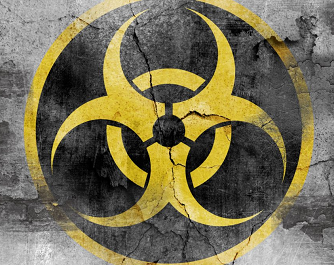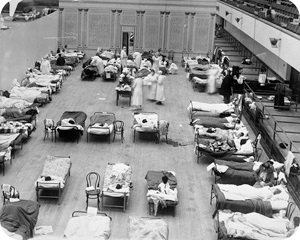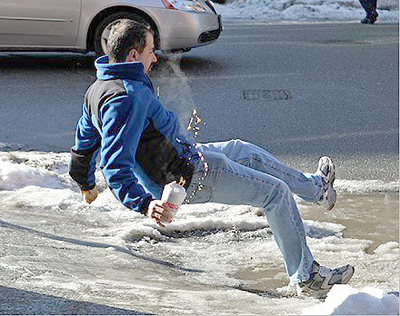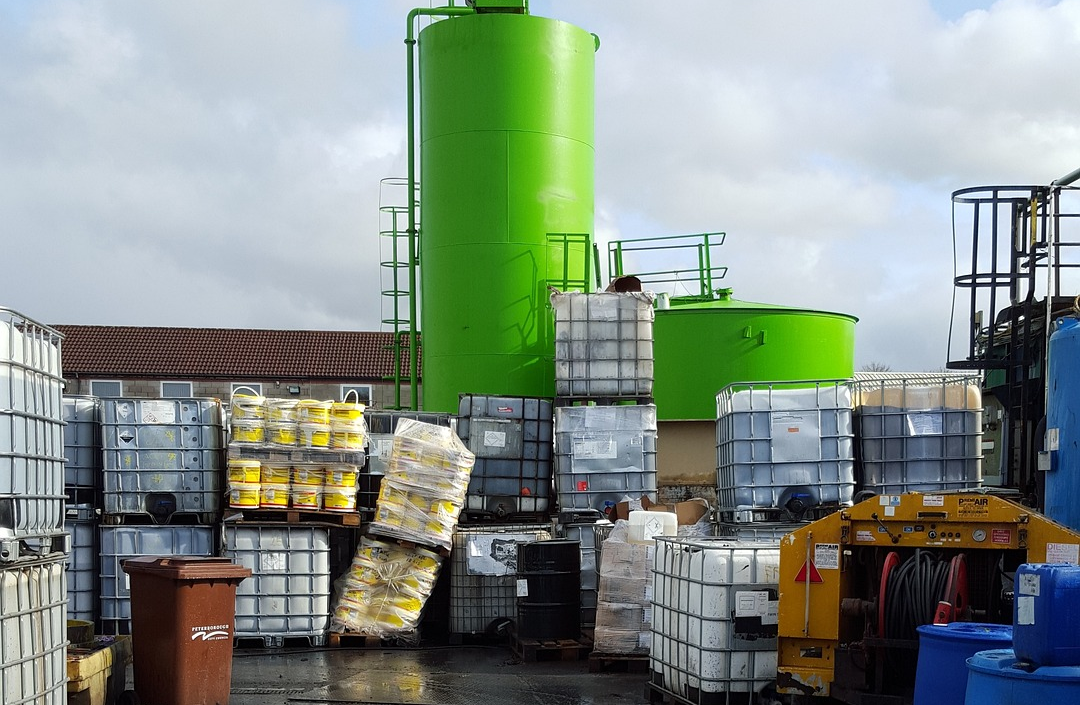Unit 9: Lesson 4: Hazardous Chemicals and Materials
Lesson 4: Hazardous Chemicals and Materials

Lesson 4: Hazardous Chemicals and Materials
Another common risk in health science settings is hazardous chemicals and materials. Health scientists performing research may handle hazardous materials, both organic and inorganic, daily. Hazardous materials are defined as materials or products that are potentially dangerous, and they may be purchased and used at a health science facility. Hazardous wastes are materials produced at a health science facility and disposed of as waste. Materials and wastes may be classified as dangerous or potentially hazardous if they are corrosive, toxic, ignitable, or reactive.
Biohazard Warning Symbol
In many healthcare settings, it is common for solid chemicals to be used to disinfect and sterilize surfaces and equipment, treat patients, and help control animal and insect pests. Healthcare professionals who handle medications, including preparing or administering them, may also be exposed to any chemicals in these pharmaceuticals. Further, some health scientists may research the effects of toxic or hazardous substances to create treatments, understand the symptoms and effects, and find better ways of working with the materials.
Cleaners and disinfectants are perhaps the most widely used chemicals in healthcare settings. Their use is tied to reducing the risk of bacteria and viruses spreading from one patient to another. History provides us with many examples of infectious illnesses, such as the 1918 flu pandemic that killed millions of people, which affects large numbers of people and could potentially be spread through healthcare settings. However, these chemicals can also contribute to health issues. Glutaraldehyde, for example, has been used as a disinfectant for heat-sensitive machines and equipment. Health scientists have noted that its use can lead to side effects such as asthma, nausea, and headaches, so healthcare employees should exercise caution when using it.
Volunteer nurses care for 1918 flu victims
1918 Flu Epidemic, Oakland, California
Although employees often need to work with the materials present or receive approval to change these chemicals, there are steps that healthcare professionals can take to minimize the dangers of hazardous materials. In some cases, it may be possible to stop using particular hazardous materials or switch to less dangerous substances. For example, in some instances, it may be possible to use vinegar-based cleaners rather than harsher chemical cleaners. Sticky traps for eliminating insect and animal pests can be less hazardous than spraying chemicals within healthcare facilities.
Health science professionals can minimize their risks from hazardous materials by learning and following safety protocols for the materials they are handling. This can include ensuring that their work area has proper ventilation, wearing protective clothing such as gloves, and knowing what to do if a dangerous situation develops with the substance. When hazardous materials are used, facilities should have aid available in the event of possible contamination. For example, a hospital may have areas available to drench the body with water quickly or flush out the eyes in case of harmful exposure.
Falls, Slips, and Trips
When you think about a hospital setting, what does it look like? One component of many healthcare settings, including hospitals, is floors that are easy to clean. However, the ease of cleaning floors that are not carpeted also creates an environment where floors may be more slippery and dangerous for individuals walking on them. Spills, floors wet from cleaning, and cluttered areas can all increase the risk of falls, slips, and trips in healthcare settings.

One way to reduce the risk of falls and slips is to keep floors as clean and dry as possible. Spills should be cleaned immediately, and warning signs should be posted where the floor is wet. The use of floor drains and mats can also help reduce this problem. Healthcare professionals can reduce their risks from wet floors by choosing footwear that will provide them with good traction regardless of the type of surface on which they are walking.
Healthcare professionals can also help reduce the risks of falls and trips by keeping hallways and other high-traffic areas clear of clutter and items that might cause a person to trip and fall. Carpets or mats that have bulges in them or that have bunched up should be straightened out. Equipment that requires electricity should be plugged into outlets out of the way of walkways so that people are less likely to trip over the cords. Carts and countertops should have rounded edges whenever possible to reduce the risks of injuries if someone were to fall against them. Healthcare professionals can also use flashlights or other low-level lighting when walking into darkened areas such as patients' rooms at night. Proper equipment, such as ladders, can also reduce falls—for example, ladders when reaching something rather than stepping up onto a chair or other item.
